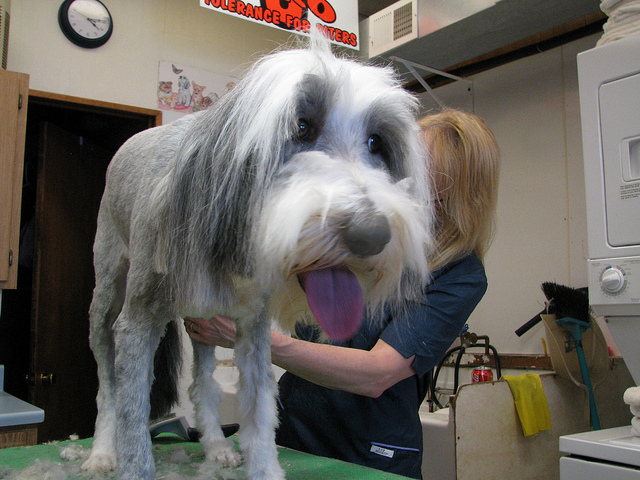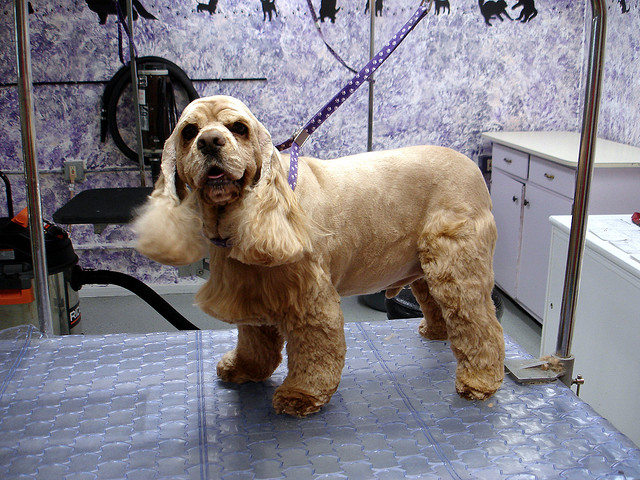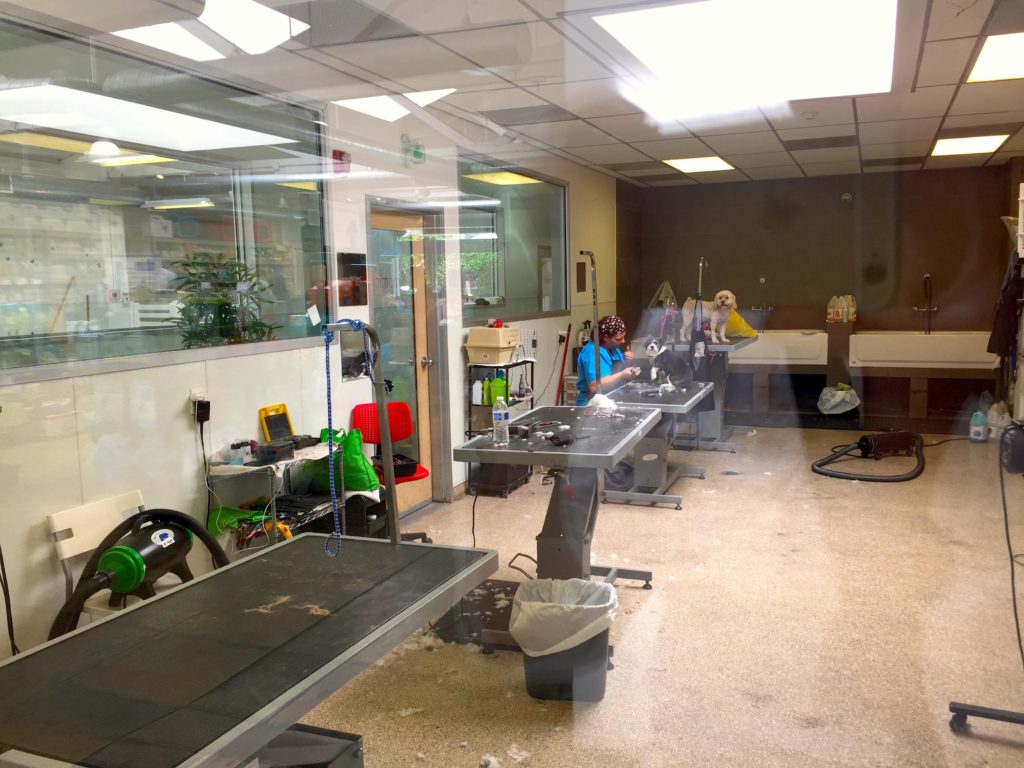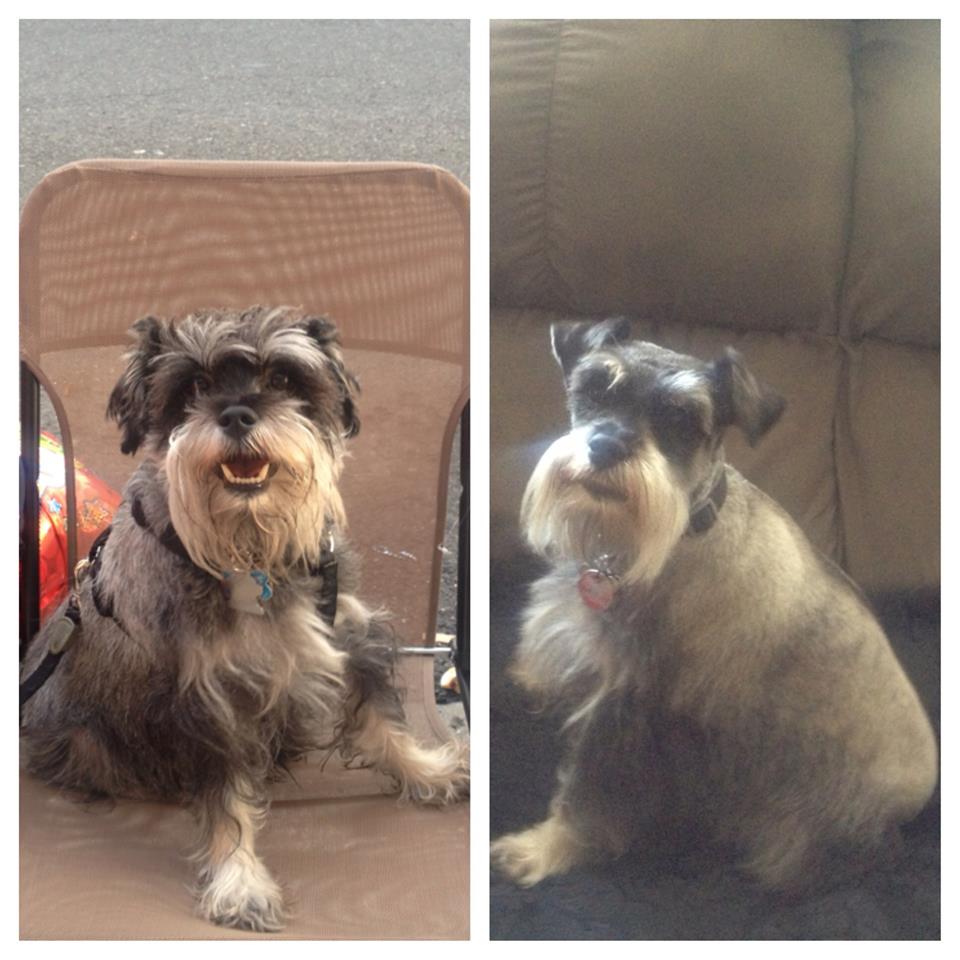
I have worked in just about every type of pet business there is – retail, veterinary and a dog daycare, boarding, and training facility. All three of them had grooming as part of their services. None of them required any type of prior experience to do something that most would deem simple – washing a dog.
But grooming is not only an art form, it can also be dangerous to both the dog and groomer. The groomer can be bitten, the dog can be cut, hung if he jumps off the table, and even abused by an impatient groomer.
Or, in the case of Curly, a 17-year-old toy poodle who died in January at the C&C Pet Food for Less grooming salon in California, baked to death by the hot kennel dryers.
Curly is just one of several pets that have passed away recently due to groomer negligence. In May, Sandy, a two-year-old cat, not only passed away at VIP Pet groomers in Maryville, California, but they cremated her without the owner’s permission, so a necropsy to determine cause of death could not be performed.
My own sister visited the Redmond, Oregon Petco this weekend and saw a dog being abused by a groomer – the dog was trying to bite him and the groomer was roughly trying to get the dog to stop. She told the manager, who seemed surprised, but did not appear to do anything about it.

Why is this all happening?
Part of the problem is that anyone can slap a sign up and say they are a groomer. While there are grooming schools, certifications and associations, none of it is required.
In response, the Professional Pet Groomers & Syltists Alliances (PPGSA) announced new safety and sanitation standards for pet grooming at the 2015 SuperZoo in Las Vegas, Nevada. The PPGSA was created to harness the experience and expertise of the three major national pet styling associations – International Professional Groomers, Inc (IPG), International Society of Canine Cosmetologists (ISCC) and National Dog Groomers Association of America (NDGAA) – to develop industry-wide best practices for pet grooming. It’s a coalition of more than 15 national grooming groups, schools, service organizations and major retailers with grooming programs involved. The protocol includes standards for animal house and handling, equipment, and facilities, with a focus on safe operations and attentive animal care. The final standards are scheduled for release at Groom Expo in Hershey next month.
Linda Easton, president of IPG, said, “We believe that providing groomers with education and industry standards about the safe and humane handling of pets can give them the mindset, tools and desire to provide exceptional service to all pets in their care.”
Of course, since belonging to any of these groups is optional, many groomers will not even know about these regulations (none of the ones I interview for this story were aware for them). And, for those that do, there is nothing making them follow these guidelines.
Having worked in all these places myself, I can tell you my personal opinion on it. I saw a lot of impatient people doing a job they were not necessarily fond of. Many “groomers” are also vet techs, dog daycare attendants, or receptionist that would rather be doing something else. Or, they have been grooming all day and are crabby and tired. If a dog acts up, they don’t have the patient (or understanding of positive reinforcement training and handling techniques), to treat someone else’s family member properly.
Personally, my dogs don’t go to them. I do everything myself (or they go the vet where my husband works and he stays with them). It’s that important to me.
Professionals Sound-off
K9Loft has three dog grooming and daycare locations in the greater Los Angeles area. The owners, Alex Sabouri and Gil Dan do several things to ensure that the groomers they hire will treat the pets right.

Here are their top 5 rules to ensure a safe grooming environment:
- Proper background checks on all groomers.
- Making sure tools and workstations are kept sanitary.
- Using only veterinary recommended cleaning solutions and never using anything toxic.
- Making sure groomers abide by proper safety procedures (such as never leaving a dog unattended on table or leaving a dog unattended in a cage dryer).
- Never use force while grooming a dog. If a dog is being unusually uncooperative we ask that the groomers refuse to groom the dog or try again another time. Force should never be used to groom a dog.
They do not think the regulations should focus on training of the groomers.
“There should be more regulation of groomers but the focus of the regulation shouldn’t be on the training but rather more on the background checks for the groomers,” they told us.

Dr. Ann Hohenhaus, staff doctor at The Animal Medical Center in NYC has a different take on the grooming situation.
“If you follow pet trends on social media, you will read about injuries and even deaths related to pet grooming, but I would speculate that millions of dogs are safely groomed,” Dr. Hohenhaus says.
However, this does not mean she does not think groomers could do without regulation, especially because of the risks associated with the profession.
“Groomers should make themselves aware of potential hazards in the grooming parlor. A study of Brazilian dogs found young male dogs and small dogs such as Yorkshire terriers, miniature poodles and Lhasa Apsos, are breeds at greatest risk for serious injury during bathing and grooming,” she adds. “Groomers should take extra precautions when grooming these breeds. Dogs can fall from grooming tables, resulting in choking injury or blunt force injury. Common sense dictates groomers should collaborate with the dog’s veterinarian to make grooming as safe for those cases when the use of tranquilizers may be necessary.”
She also notes that cleanliness of the grooming parlor and it’s tools is paramount because of the risk of bacterial or fungal infections.
Her answer to regulations? She believes there is an opportunity for groomers to be regulated, perhaps like hair salons and barbershops, through licensing and regulations by municipal governments. Or, self-regulation through accreditation, like veterinary hospitals.
“The Animal Medical Center in NYC is one of 3500 veterinary practice teams in the United Stated accredited by the American Animal Hospital Association,” She explains. “AAHA accreditation ensures pet owners the hospital meets high standards of veterinary care.”

James Guiliani, co-owner of The Diamond Collar, a grooming parlor in Brooklyn, New York. One of his rules? No tranquilizers. Instead, his groomers take extra time to help nervous dogs adjust. He also allows owners to stay with their pets. TheDiamondCollar.com. Guiliani also has many safety precautions he insists every groomer follow at his business:
- Start by asking if the dog is on medication or has a seizure condition.
- Ask if the dog has fleas, because the last thing you want is other dogs in your care getting them.
- Ask if the dog is up-to-date on its shots, including Bordetella (kennel cough).
- Never leave a dog unattended on a table. Never express an anal gland—only a vet should do that. My groomers must sanitize their grooming shears after every dog.
- Cell phones aren’t allowed in the grooming room because my groomers should be focused on the dog only.
- I insist on being notified about anything unusual that a groomer finds on a dog (even just a pimple) so the owner doesn’t blame us for anything but also so I can call any lumps or bumps to the owner’s attention for the sake of the dog’s health.
Guiliani, has yet another idea on what regulation should look like. “Groomers who go to grooming school should not be able to come out and open a shop automatically,” he says. “There should be an apprenticeship program (minimum six months) with someone who has at least 10 years of experience.” Like Dr. Hohenhaus, he believes a person should have to have a license to open up a salon. “I took a week-long class and had to pass a test with the board of health to get mine,” he adds. “I don’t think each groomer should have to have a license, but someone with a license should be on the premises at all times.”
Take Our Poll! Do you think Pet Grooming needs to be regulated? If so, how?
